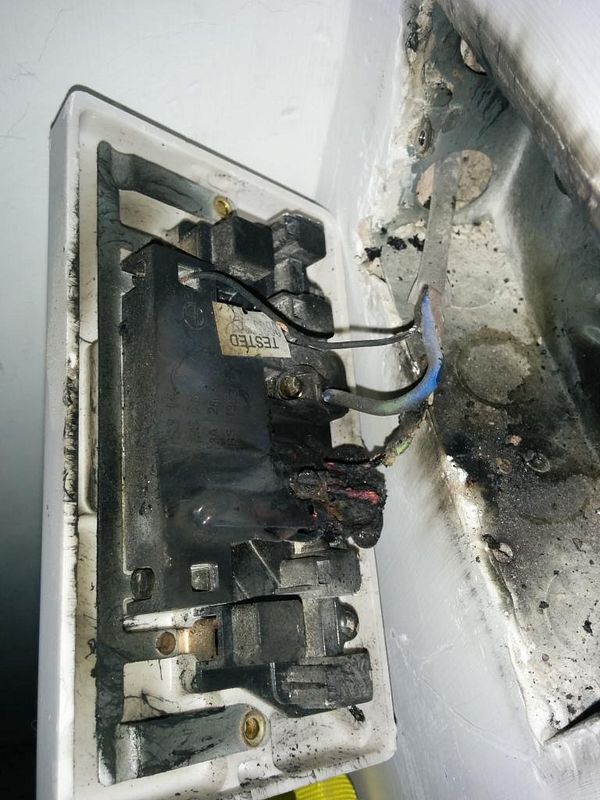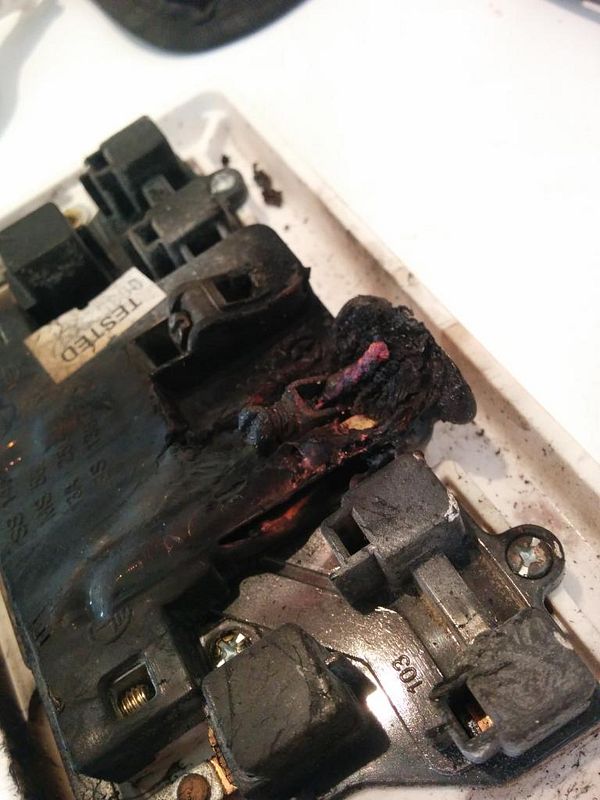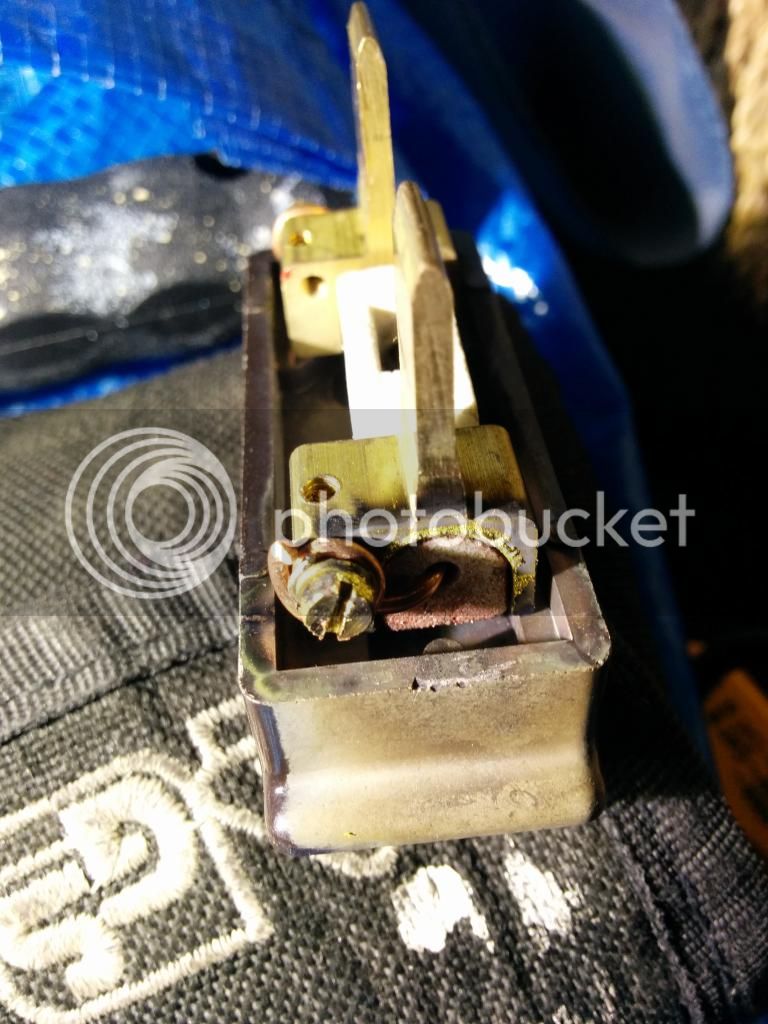Hi,
Been browsing the site after an absence - thanks to a reminder from Admin!
Something I've been meaning to ask/post for ages...
I went out to a fault over Christmas - RCD trip problem... gave usual advice over phone (unplug everything then try a reset) - hoping this would sort it... I didn't really want to go out at 7 at night.
To cut a long story short, I eventually found a burnt neutral in a socket which had eventually touched earth.
The old dear always irons from this socket so it is well used/loaded.
Trimmed back neutral, crimmped an extension and replaced socket - job done.
But it reminded me to post a question - why is it nearly always the neutral conductor that burns?
In my experience, this is usually true when 45A switches burn - it's usually the neutral. It might be just me, but I often come across it. I'd expect the neutral terminal to be loose, but they're often tight.
The neutral is still a line conductor and must be carrying the same current as the Live?
Have a great New Year!
Been browsing the site after an absence - thanks to a reminder from Admin!
Something I've been meaning to ask/post for ages...
I went out to a fault over Christmas - RCD trip problem... gave usual advice over phone (unplug everything then try a reset) - hoping this would sort it... I didn't really want to go out at 7 at night.
To cut a long story short, I eventually found a burnt neutral in a socket which had eventually touched earth.
The old dear always irons from this socket so it is well used/loaded.
Trimmed back neutral, crimmped an extension and replaced socket - job done.
But it reminded me to post a question - why is it nearly always the neutral conductor that burns?
In my experience, this is usually true when 45A switches burn - it's usually the neutral. It might be just me, but I often come across it. I'd expect the neutral terminal to be loose, but they're often tight.
The neutral is still a line conductor and must be carrying the same current as the Live?
Have a great New Year!




































































